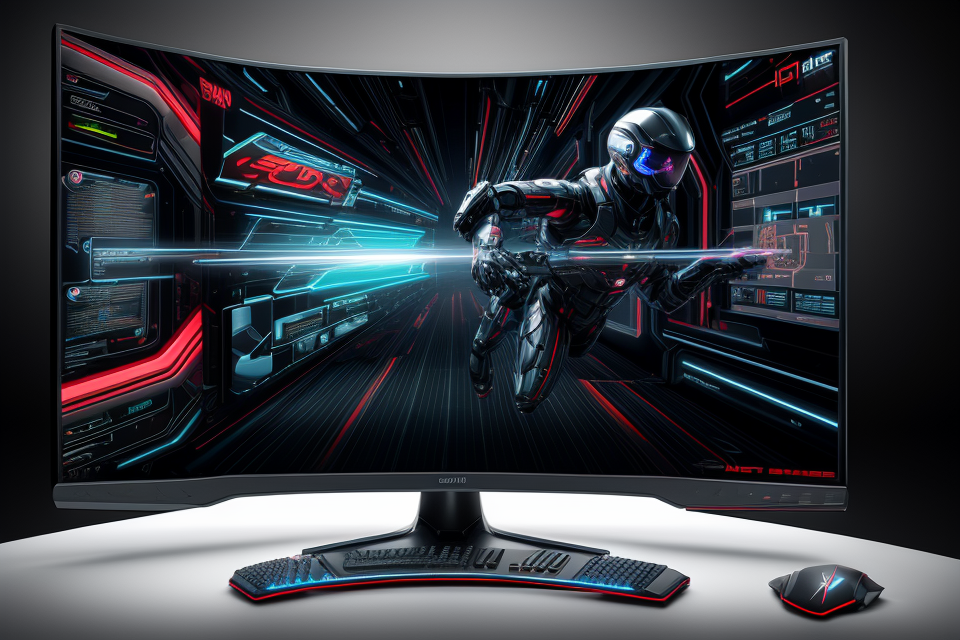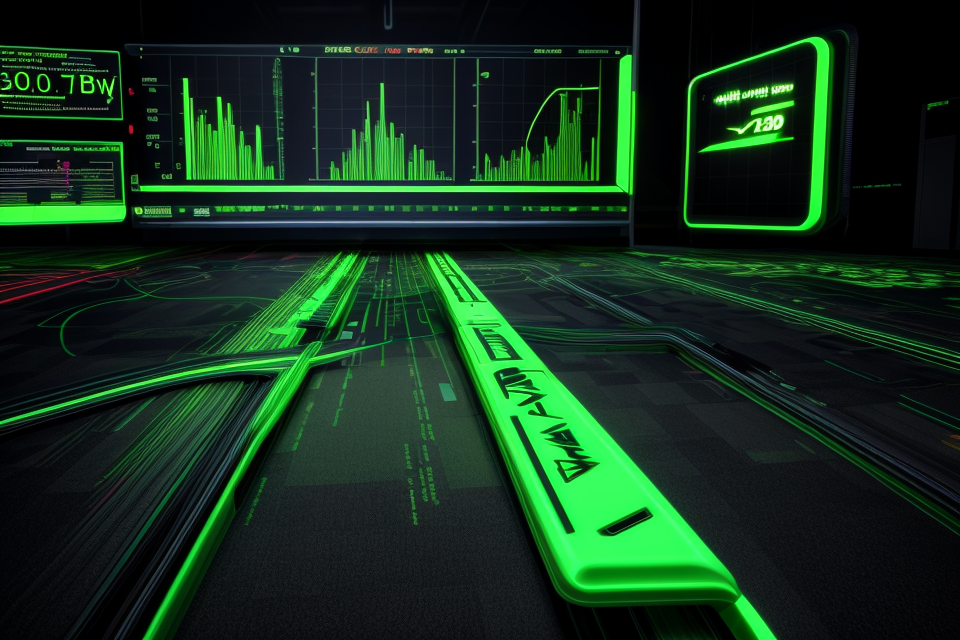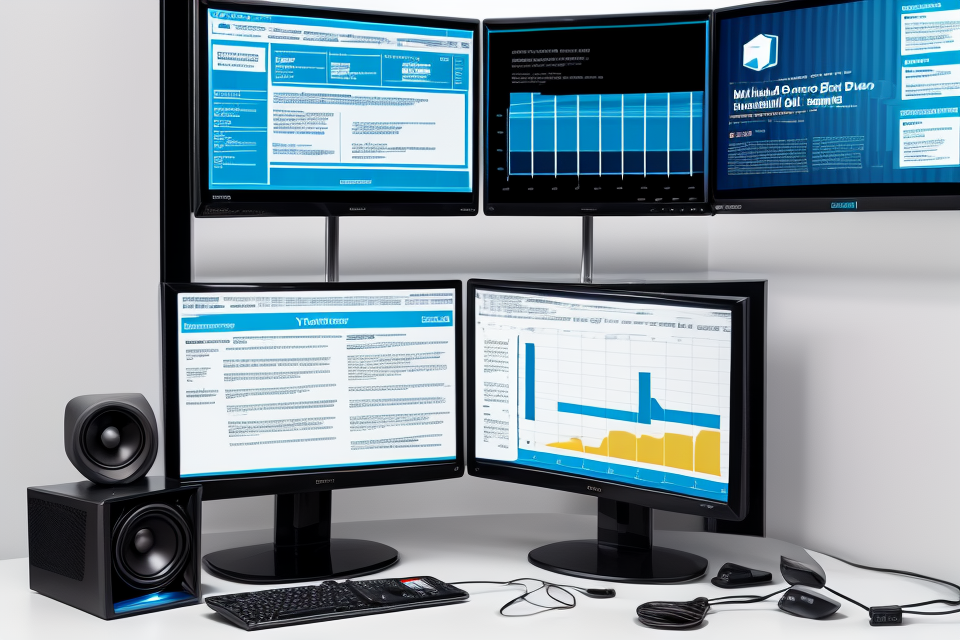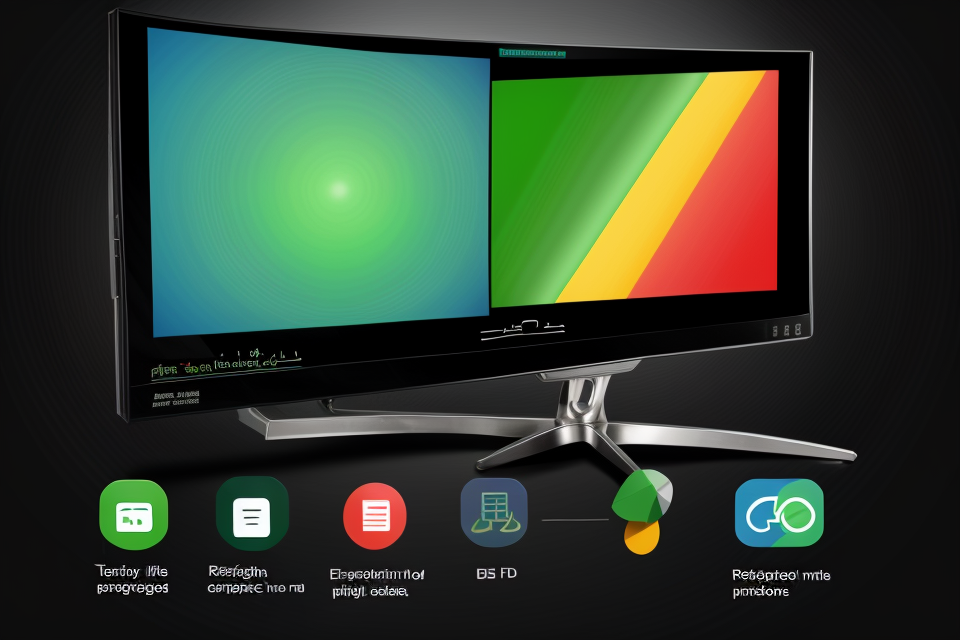
Gamers are always on the lookout for ways to enhance their gaming experience. One such feature that has gained popularity in recent times is the variable refresh rate. But the question remains, is it good to turn on variable refresh rate? In this article, we will explore the potential benefits and drawbacks of enabling variable refresh rate, and whether it is the future of gaming. Get ready to unlock the full potential of your gaming experience!
What is a Variable Refresh Rate?
How It Works
Adaptive Sync Technology
Adaptive Sync Technology is a revolutionary innovation in the world of gaming monitors. It allows the refresh rate of the monitor to change dynamically based on the frame rate of the connected device. This feature ensures that the display is always synchronized with the output of the graphics card, resulting in seamless and smooth visuals.
FreeSync and G-Sync Explained
FreeSync and G-Sync are two popular adaptive sync technologies available in the market. FreeSync is a technology developed by AMD, which allows the refresh rate of the monitor to vary between 40Hz and 75Hz. On the other hand, G-Sync is a technology developed by NVIDIA, which allows the refresh rate of the monitor to vary between 30Hz and 240Hz. Both of these technologies aim to eliminate screen tearing and stuttering, providing a more immersive gaming experience.
FreeSync monitors use a dynamic refresh rate that adjusts based on the frame rate of the connected device. This means that the monitor will refresh at a rate that is synchronized with the frame rate of the graphics card. If the frame rate drops below the refresh rate of the monitor, the monitor will automatically adjust its refresh rate to match the frame rate of the graphics card. This helps to eliminate screen tearing and stuttering, resulting in smoother and more fluid visuals.
G-Sync monitors work in a similar way, but they use a different method to adjust the refresh rate. G-Sync monitors have a built-in GPU that is responsible for adjusting the refresh rate of the monitor. This GPU communicates with the graphics card to ensure that the refresh rate of the monitor is always synchronized with the frame rate of the graphics card. If the frame rate drops below the refresh rate of the monitor, the GPU will adjust the refresh rate of the monitor to match the frame rate of the graphics card. This helps to eliminate screen tearing and stuttering, resulting in smoother and more fluid visuals.
Overall, adaptive sync technology has revolutionized the world of gaming monitors, providing a more immersive and seamless gaming experience. FreeSync and G-Sync are two popular adaptive sync technologies that have become popular among gamers due to their ability to eliminate screen tearing and stuttering. With the continued advancement of adaptive sync technology, it is clear that enabling variable refresh rate is the future of gaming.
Benefits
Enabling variable refresh rate in gaming offers several benefits that enhance the overall gaming experience. Some of these benefits include:
- Smoother Gaming Experience
One of the primary benefits of variable refresh rate is a smoother gaming experience. This is because the variable refresh rate technology ensures that the frame rate of the game is always synchronized with the refresh rate of the monitor. This results in a seamless and smooth gaming experience, without any lag or tearing.
- Reduced Input Lag
Another benefit of variable refresh rate is reduced input lag. This is because the technology ensures that the input from the controller or keyboard is displayed on the screen without any delay. This results in a more responsive gaming experience, where the player’s actions are displayed on the screen almost instantly.
- Eliminating Screen Tearing
Screen tearing is a common issue in gaming, where the game’s image appears to be torn or split into two parts. This can be distracting and can affect the overall gaming experience. However, with variable refresh rate technology, screen tearing can be eliminated. This is because the technology ensures that the frame rate of the game is always synchronized with the refresh rate of the monitor, resulting in a seamless and tear-free gaming experience.
Overall, enabling variable refresh rate in gaming offers several benefits that enhance the overall gaming experience. From a smoother gaming experience to reduced input lag and eliminating screen tearing, this technology has the potential to revolutionize the gaming industry.
The Pros and Cons of Enabling Variable Refresh Rate
Pros
Superior Graphics Performance
Enabling variable refresh rate (VRR) technology in gaming has been found to offer superior graphics performance. With VRR, the frame rate of the game is dynamically adjusted to match the refresh rate of the monitor, resulting in smoother and more seamless visuals. This is particularly beneficial for fast-paced games that require high frame rates to prevent lag and motion blur.
Increased Responsiveness
VRR technology also increases the responsiveness of the game, allowing for quicker and more precise inputs from the player. This is especially important in competitive gaming, where milliseconds can make a difference between winning and losing. With VRR, players can respond to changes in the game more quickly and effectively, giving them an edge over their opponents.
Compatibility with VRR-Enabled Monitors
Another benefit of enabling VRR is compatibility with monitors that support the technology. VRR-enabled monitors offer a more immersive gaming experience, with smoother visuals and faster response times. By enabling VRR, gamers can take advantage of these features and enjoy a more seamless and responsive gaming experience. Additionally, VRR-enabled monitors are becoming increasingly popular, so enabling VRR can future-proof your gaming setup.
Cons
- Limited Compatibility with VRR-Enabled Monitors
- Many gaming monitors currently available in the market do not support VRR technology, limiting the number of available options for gamers who want to take advantage of this feature.
- Gamers may need to purchase a new monitor that supports VRR, which can be costly and may not be feasible for all players.
- Possible Image Quality Degradation
- Some gamers have reported image quality degradation when using VRR, particularly in fast-paced games with a lot of motion.
- This can be attributed to the way VRR adjusts the refresh rate to match the output of the GPU, which can sometimes result in a less than optimal image quality.
- Cost of Upgrading to VRR-Enabled Monitors
- As mentioned earlier, upgrading to a VRR-enabled monitor can be costly for some gamers.
- While the benefits of VRR are significant, the cost of upgrading to a new monitor may be a deterrent for some players, particularly those who are on a tight budget.
Overall, while the pros of enabling variable refresh rate technology in gaming are significant, there are also some cons that gamers should be aware of. Limited compatibility with VRR-enabled monitors, possible image quality degradation, and the cost of upgrading to a new monitor are all factors that gamers should consider before making the switch to VRR.
Is Variable Refresh Rate Worth It?
Factors to Consider
- Type of Games You Play
- Quality of Your Current Monitor
- Budget
Type of Games You Play
When deciding whether variable refresh rate is worth it, the type of games you play should be considered. If you primarily play fast-paced games that require quick reflexes, such as first-person shooters or racing games, variable refresh rate can provide a significant advantage. In these types of games, a smoother frame rate can lead to better accuracy and reaction times, which can translate to improved performance and a more enjoyable gaming experience.
On the other hand, if you primarily play slower-paced games that are not as reliant on quick reflexes, such as strategy games or puzzle games, the benefits of variable refresh rate may be less noticeable. In these types of games, the smooth frame rate provided by variable refresh rate may not have as much of an impact on gameplay, and other factors such as graphics quality and game mechanics may be more important.
Quality of Your Current Monitor
Another factor to consider when deciding whether variable refresh rate is worth it is the quality of your current monitor. If you have an older monitor with a lower refresh rate, upgrading to a monitor with variable refresh rate capabilities can provide a significant improvement in gameplay. However, if you have a newer monitor with a high refresh rate, the benefits of variable refresh rate may be less noticeable.
In addition, the type of monitor you have can also impact the effectiveness of variable refresh rate. For example, if you have a monitor with a high response time, variable refresh rate may not be able to fully eliminate motion blur and input lag, which can negatively impact gameplay. On the other hand, if you have a monitor with a low response time, variable refresh rate can provide a more noticeable improvement in gameplay.
Budget
Finally, budget should also be considered when deciding whether variable refresh rate is worth it. Upgrading to a monitor with variable refresh rate capabilities can be expensive, and it may not be a worthwhile investment for all gamers. However, if you are a competitive gamer who values every advantage, or if you are a casual gamer who wants to enhance your gaming experience, the benefits of variable refresh rate may be worth the extra cost.
Overall, there are several factors to consider when deciding whether variable refresh rate is worth it. The type of games you play, the quality of your current monitor, and your budget should all be taken into account when making this decision.
FAQs
1. What is variable refresh rate and how does it work?
Variable refresh rate (VRR) is a technology that allows a display to dynamically adjust its refresh rate based on the content being displayed. This means that the refresh rate can vary from 60Hz to a maximum supported rate of 240Hz, depending on the complexity of the image. This technology is particularly useful for gaming, as it can reduce stuttering and tearing, providing a smoother and more stable gaming experience.
2. How does VRR improve gaming performance?
VRR can improve gaming performance by reducing stuttering and tearing, which can occur when the graphics card is unable to keep up with the display’s refresh rate. By allowing the display to dynamically adjust its refresh rate, VRR can help to ensure that the image remains smooth and stable, even during intense action sequences. This can result in a more immersive and enjoyable gaming experience, as well as potentially improved performance in competitive gaming scenarios.
3. What are the benefits of enabling VRR in gaming?
Enabling VRR in gaming can provide a number of benefits, including improved performance, reduced stuttering and tearing, and a more immersive gaming experience. Additionally, VRR can also help to extend the lifespan of a display, as it can reduce the strain on the display’s components by reducing the number of times the screen needs to refresh. This can result in a longer-lasting display that is less prone to image retention and other issues.
4. Are there any downsides to enabling VRR in gaming?
One potential downside to enabling VRR in gaming is that it may increase the strain on the graphics card, particularly if the display is able to refresh at its maximum supported rate of 240Hz. This can result in increased heat and noise output from the graphics card, and may potentially reduce the lifespan of the card. Additionally, some games may not be optimized for VRR, and may exhibit issues such as stuttering or tearing even with VRR enabled.
5. How do I enable VRR in my gaming setup?
Enabling VRR in your gaming setup will depend on the specific display and graphics card that you are using. In general, you will need to ensure that your display supports VRR, and that your graphics card is compatible with the VRR technology. Once you have confirmed that your setup is compatible, you will need to enable VRR through the display’s on-screen display (OSD) settings, and potentially through the graphics card’s control panel as well. The specific steps for enabling VRR will vary depending on your setup, so it is best to consult the documentation for your specific display and graphics card for more information.


